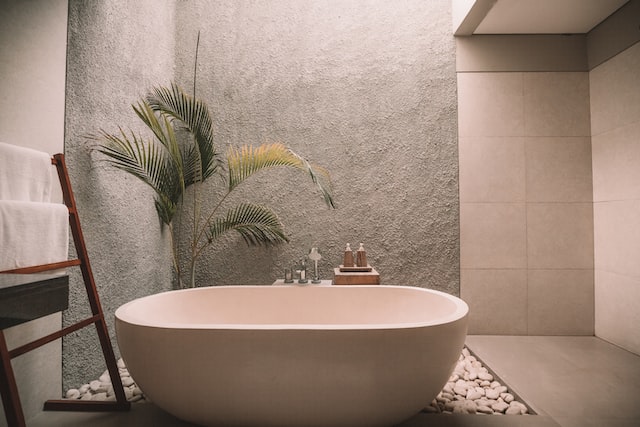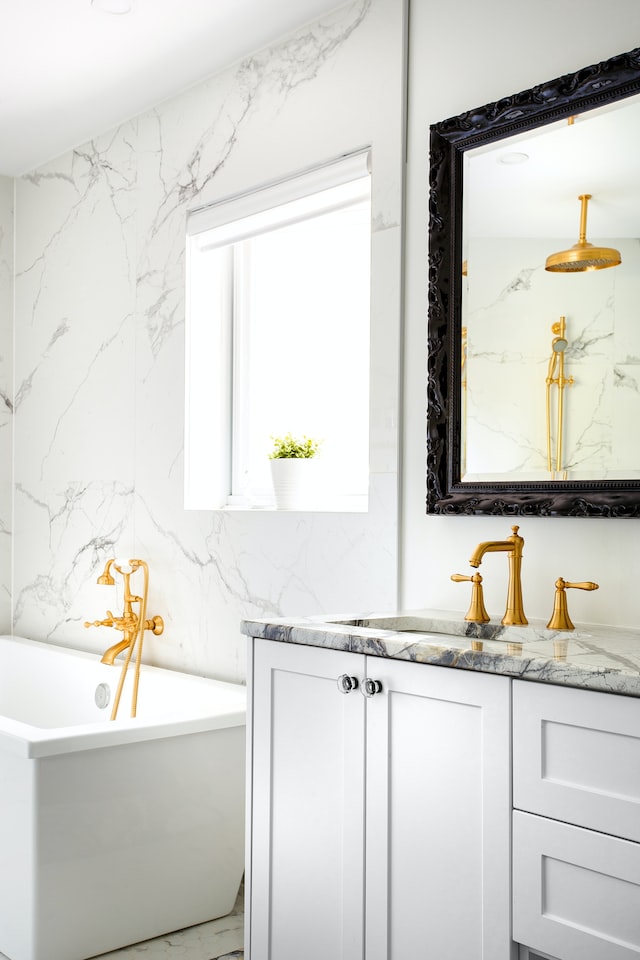You don’t need to have any excuse to find some time for a soak in the tub. After all, a soothing bath is an ideal way to unwind and relax after a hard day. However, if you’re looking for reasons to finally install that beautiful bathtub you’ve always wanted in your house, there are plenty of them.
Bathing frequently has been linked to many health benefits such as improved blood circulation, reduced muscle pain relief, improved sleep, better skin and improved mood. Not to mention that installing a bathtub is one of the best ways to make your bathroom really feel like a spa.
If you’ve been checking baths online, you already know that they come in a variety of designs, shapes and sizes and can serve different purposes. This means that choosing the bathtub type that will suit your needs and personality can be a bit challenging. And this is precisely what I’m here to assist you with. People say that knowledge is the secret to success, and this is true even when it comes to shopping. Below is all the info you need when exploring the wide range of baths.

Photo by Jared Rice on Unsplash
How to choose the right bathtub: Types of bathtubs
Choosing between a freestanding and an inset model is usually the first step in selecting the ideal bath. So, let’s take a look at how both compare.
Freestanding bathtub
Because freestanding bathtubs are not nestled snugly against a wall, they demand more space than inset bathtubs, thus the size of your bathroom will affect you in this decision.
Freestanding bathtubs can be placed in the centre of the room or against a wall, but they require more space around them than inset bathtubs, so they will take up more space in your bathroom. Go for an updated version of the old claw-footed tub or choose a contemporary form – both come in a variety of sizes.
A freestanding bath is a fantastic focal point in a bathroom, but for parents with small children, it may also be a practical decision, providing all-around access. If you enjoy the aesthetic but don’t have enough room, try a back-to-wall or D-shaped bath. It resembles a freestanding bath from the front, but as it has a straight side that runs up against the wall, it requires less floor space.
Inset bathtub
Inset, built-in, or straight bathtubs can be a good fit for small bathrooms or a space-efficient option for larger rooms as they sit against a wall, taking up one or two corners. They come in various sizes, enabling you to select one that fits the proportions of your space.
Shower bathtubs are similar to inset tubs, but feature a larger end that makes over-bath showering more comfortable. Such a model is great for those who don’t have enough space for both a bath and a shower cubicle but can manage a tub that is broader at one end.
Corner bathtubs aren’t always the large bathing spaces that their name suggests. Of course, those with identical dimensions on the sides positioned against the two walls are enormous, but offset bathtubs with uneven length sides are also available. The latter result in a wider-width tub than a straight bath. To maximise both the space inside the bath and the floor area outside it in square and nearly square rooms, think about installing a corner or offset bath.
Shapes of bathtubs
The most common shape of bathtubs seen in homes is a rectangle. This style can be installed in the more typical places that homeowners want their bathtubs to be. This includes elements such as alcoves or room corners to maximise bathroom space. Although rectangular bathtubs are commonly seen against a wall, they are also available as freestanding bathtubs. A freestanding bath takes up more floor space but makes a bigger statement.
As for what shape of bathtub is most comfortable, the classic oval-shaped bath provides superb pleasure for users while also offering outstanding aesthetic appeal with clean, unbroken lines. The properties of different bath forms vary.
In contrast to a straight bath or corner tub, an oval-shaped bathtub features intrinsic lumbar angles that allow your body to relax comfortably as you bathe. This gives your body any necessary back support and comfort without the interference of bath taps. Because oval bathtubs are so popular, finding the correct length and depth is much easier than with other shapes and types.
Choosing the right bathtub style
If you decide to go with a freestanding bath, you’ll be able to choose between conventional tubs and cutting-edge contemporary designs.
Traditional roll-top bathtubs can be elevated on feet, presenting the distinctive rolling rim while also allowing you to see beneath the bath. These features not only create a historical style, but the feet may also help a tiny bathroom feel larger by exposing more of the floor. Other variants have the same old style, but include a plinth at the base and are better suited to bigger spaces.
Slipper tubs are freestanding asymmetrical bathtubs. They are elevated at one end to support and immerse the bather. They can be small, making them a feasible alternative in areas where conventional freestanding bathtubs would not fit.
Contemporary freestanding tubs, on the outside, can be curvy or angular. Examine the interior as well, since a bath with softer lines may be more comfortable to use. Straight bathtubs offer a simple appearance with clean, contemporary lines.

Photo by Nathan Van Egmond on Unsplash
How to choose the right bathtub: Materials
The material used to make a bath can determine how it should be cared for, how long it will last, and even how long water will maintain its heat. Keep in mind that materials also affect the weight of the tub. If you replace an old bath with a heavier one, the floor might need to be reinforced.
Acrylic
This is a popular bath material that is also inexpensive. It is simple to maintain. Because it is bright, it may be suitable for an older home’s first floor.
- Pros: They are long-lasting and adaptable, and they can be moulded into many forms and colours. In addition to being lightweight and simple to install, acrylic bathtubs effectively retain heat. Often, acrylic is the most affordable material.
- Cons: If abrasive cleaners are used, they will scrape. Polymer tubs can distort, so be mindful of less expensive, less strong tubs.
Steel
This is an extremely durable material for a bath. Its enamel covering may become cracked over time, but it can be restored. It feels colder to the touch than conventional bath materials yet retains the heat of the bath water.
- Pros: Porcelain-enamelled steel is durable and inexpensive since it is lighter than cast iron.
- Cons: Because steel conducts heat, water cools fast. This substance is prone to chipping and is significantly heavier than acrylic.
Cast Iron
Often used to make freestanding bathtubs, it’s extremely durable and simple to clean. In a cast-iron bath, bath water holds heat for longer. Because it is one of the heavier bath materials, check to see whether the joists will need to be reinforced before installation.
- Pros: Cast iron is a design classic that is incredibly robust, and options with thicker enamel are significantly more chip resistant.
- Cons: It’s slow to heat but retains heat effectively once it is heated.
Installation
The style of tub you desire and the quantity of space in your bathroom will decide how it should be installed. The amount of space available typically dictates the type of tub. In addition, consider whether new plumbing should be installed or the current plumbing can be reused. Adding or moving piping will raise the cost of the installation, so keep that in mind. You should discuss installation options with your bathroom remodeler early in the design phase.
Once you finally get to enjoy your bathtub filled with warm water and a few drops of essential oils, surrounded by candlelights and a glass of wine by your side, you’ll discover that this was one of the best investments you could make to your health and wellbeing.
Hope this article on how to choose the right bathtub if useful to you!
Cover photo by Steven Ungermann on Unsplash



